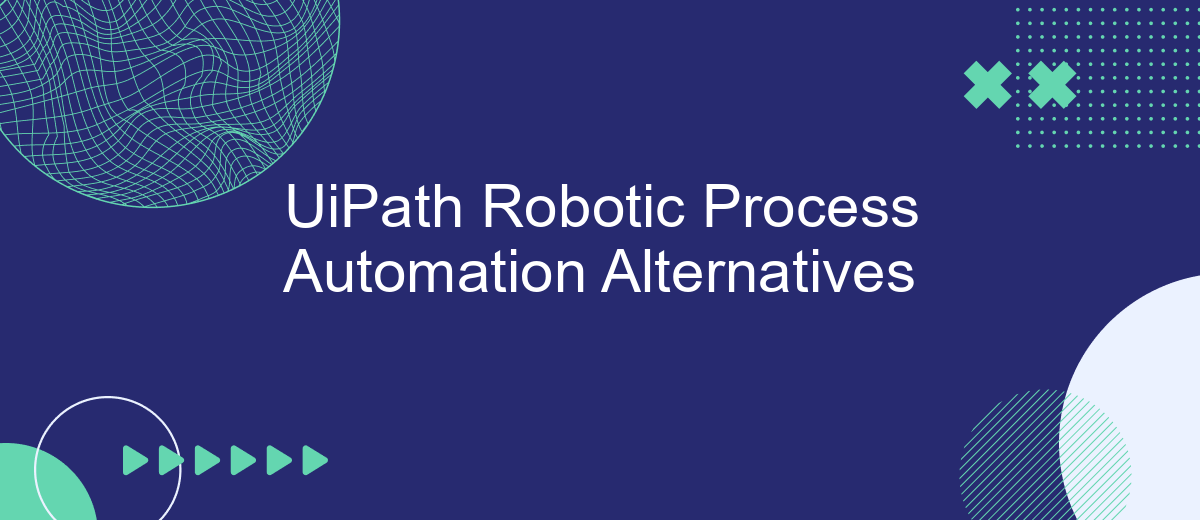As businesses continue to seek efficiency and automation, UiPath has emerged as a leading tool in the Robotic Process Automation (RPA) industry. However, it’s not the only option available. This article explores various alternatives to UiPath, comparing their features, benefits, and use cases to help you make an informed decision for your organization's automation needs.
Introduction
As businesses increasingly turn to automation to streamline their operations, UiPath has emerged as a leading player in the Robotic Process Automation (RPA) market. However, it's essential to explore other alternatives that might better suit specific needs or offer unique benefits. This article delves into some of the most viable UiPath RPA alternatives available today.
- Automation Anywhere
- Blue Prism
- Microsoft Power Automate
- WorkFusion
- SaveMyLeads
Each of these alternatives provides distinct features and capabilities, catering to various business requirements. For instance, SaveMyLeads stands out by offering seamless integration with numerous platforms, simplifying the automation of lead management processes. By understanding the strengths and weaknesses of each option, businesses can make more informed decisions and choose the RPA tool that best aligns with their objectives.
Comparison of Key Features

When comparing UiPath Robotic Process Automation (RPA) alternatives, it's essential to evaluate key features such as ease of use, scalability, and integration capabilities. Many RPA tools offer user-friendly interfaces and drag-and-drop functionalities, making them accessible for users with varying levels of technical expertise. Scalability is another critical factor, as businesses need solutions that can grow with their needs without compromising performance. UiPath, for instance, provides robust scalability options, but alternatives like Automation Anywhere and Blue Prism also offer competitive scalability features.
Integration capabilities are crucial for seamless workflow automation. UiPath excels in this area with its extensive library of pre-built connectors and APIs. However, alternatives like SaveMyLeads stand out by offering specialized services that simplify the integration process. SaveMyLeads enables businesses to connect various applications and services effortlessly, ensuring data flows smoothly across systems. Additionally, tools like Microsoft Power Automate and WorkFusion provide strong integration options, allowing users to link multiple applications and automate complex workflows efficiently.
Use Case Analysis

When considering alternatives to UiPath for Robotic Process Automation (RPA), it’s essential to analyze specific use cases to determine the best fit for your business needs. Different RPA tools offer unique features that can cater to various operational requirements, from simple task automation to complex workflow integrations.
- Data Entry Automation: Tools like Automation Anywhere and Blue Prism excel in automating repetitive data entry tasks, reducing human error and increasing efficiency.
- Customer Service Automation: Platforms such as Pega and NICE are well-suited for automating customer service processes, improving response times and customer satisfaction.
- Integration Automation: SaveMyLeads is particularly effective for integrating various services and applications, streamlining data flow and enhancing system interoperability.
Each RPA tool has its strengths and weaknesses, making it crucial to evaluate them based on your specific use cases. For instance, if your primary need is seamless integration between different software applications, SaveMyLeads can be a valuable addition to your automation toolkit. By focusing on the unique requirements of your business processes, you can select an RPA solution that maximizes efficiency and ROI.
Market Share and Trends

UiPath is a leading player in the Robotic Process Automation (RPA) market, but it faces competition from various other platforms. The RPA market is growing rapidly, driven by an increasing need for automation across industries. Companies are seeking more efficient ways to handle repetitive tasks, and this demand is fueling the growth of RPA solutions.
Several trends are shaping the RPA market. One significant trend is the integration of artificial intelligence (AI) with RPA, enabling more advanced automation capabilities. Another trend is the focus on user-friendly interfaces, making it easier for non-technical users to implement and manage automation processes.
- Blue Prism: Known for its robust security and scalability features.
- Automation Anywhere: Offers a cloud-native RPA platform with AI capabilities.
- Microsoft Power Automate: Integrates seamlessly with other Microsoft products.
- SaveMyLeads: Simplifies the process of integrating various applications and services.
As the RPA market continues to evolve, businesses are increasingly looking for solutions that offer seamless integration with their existing systems. Tools like SaveMyLeads are becoming essential for enabling smooth and efficient automation workflows. The future of RPA will likely see further advancements in AI integration and user-friendly design, making these tools even more accessible and powerful.
Conclusion
In conclusion, while UiPath remains a leading tool in the Robotic Process Automation (RPA) market, exploring alternatives can provide organizations with more tailored solutions that better fit their specific needs. Each RPA tool comes with its unique features, pricing models, and integration capabilities, making it essential for businesses to evaluate their requirements thoroughly before making a decision. By considering factors such as ease of use, scalability, and customer support, companies can find an RPA solution that enhances their operational efficiency and drives growth.
Moreover, integrating RPA tools with other business applications is crucial for maximizing their potential. Services like SaveMyLeads can simplify this process by automating data transfers between different platforms, ensuring seamless workflows and reducing manual efforts. By leveraging such integration services, businesses can achieve a more cohesive and streamlined automation strategy, ultimately leading to improved productivity and better resource management.
- Automate the work with leads from the Facebook advertising account
- Empower with integrations and instant transfer of leads
- Don't spend money on developers or integrators
- Save time by automating routine tasks
FAQ
What are some alternatives to UiPath for Robotic Process Automation (RPA)?
How do these alternatives compare in terms of ease of use?
Are there cost-effective alternatives to UiPath?
What should I consider when choosing an RPA tool?
How can I integrate RPA with my existing systems?
SaveMyLeads is a simple and effective service that will help you automate routine tasks and optimize business processes. Stop wasting time uploading leads from Facebook manually – you can do it automatically, saving a lot of time and money. Eliminate routine from workflows and achieve more with minimal investment of money, effort and human resources.

